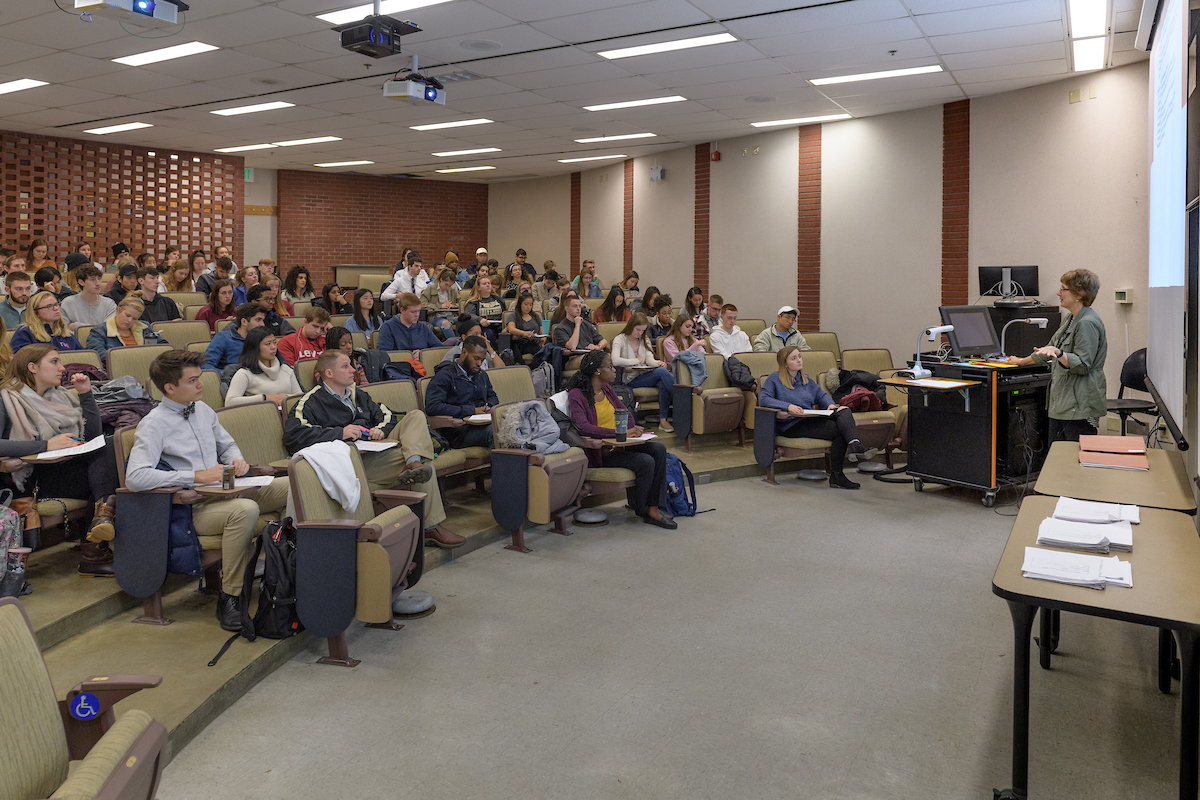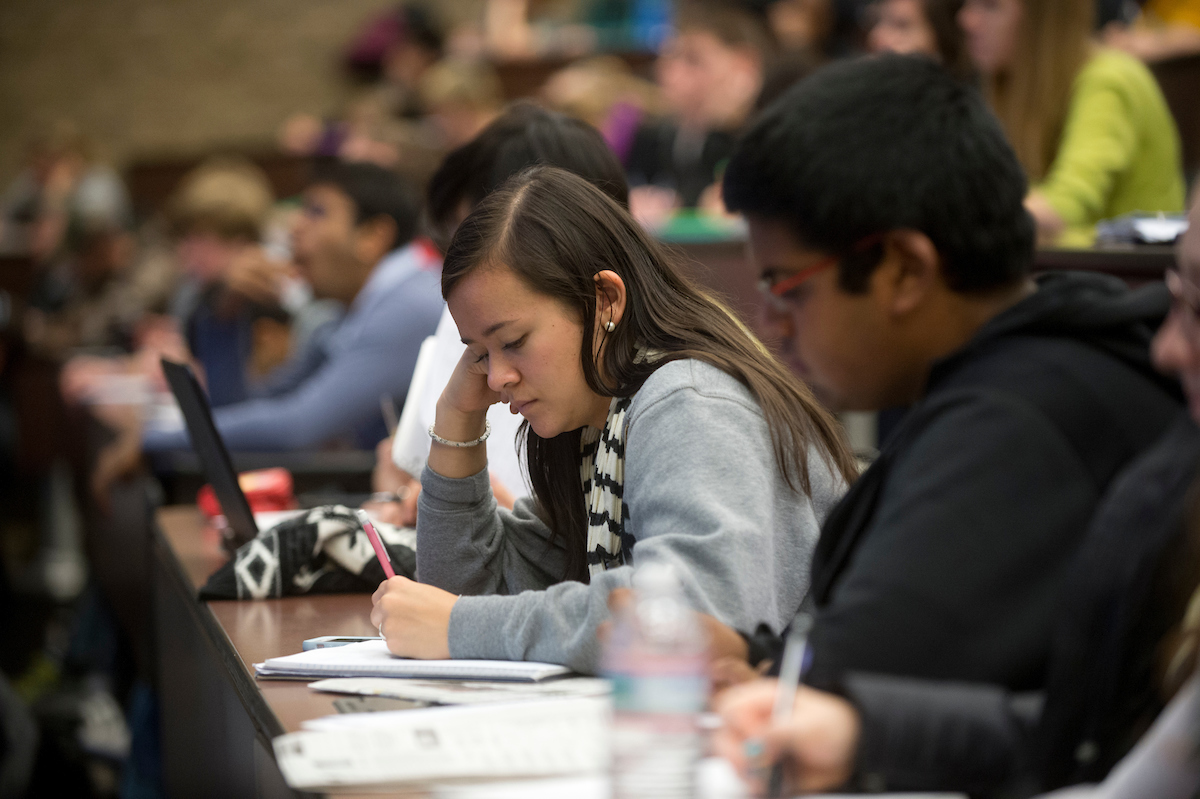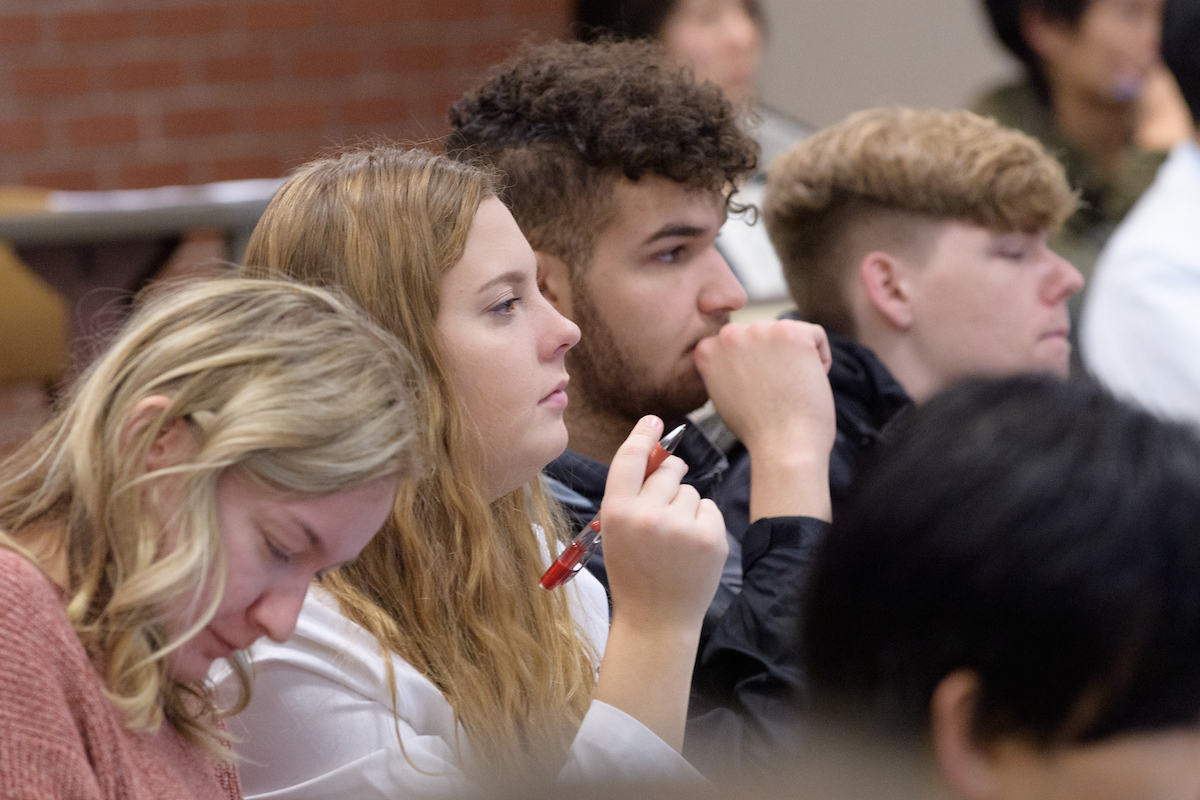
Purdue Teaching and Learning staff share research-based tips to promote student engagement
Last updated: August 19th, 2022
Purdue student Oscar Teran was a freshman when Purdue shifted to a fully online learning environment in March 2020. At first, Teran struggled with learning from a distance, but it didn’t take long for him to adjust. By his sophomore year, campus had opened back up; however, Teran opted that year to continue learning from his home country.
“My desk had become all my classrooms, and it was up to me to determine how I was going to remain engaged and motivated,” Teran said. “I did so by creating a routine for myself and sticking to it, prioritizing both my academics and mental health. Little by little, the distance became less overwhelming.”
Teran, now a senior, has since returned to in-person learning and will resume classes this fall under relative academic normalcy. Still, he says, lingering effects of the COVID-19 pandemic remain difficult to shake.
“Every semester, I try my best to create a routine that lasts, but post-pandemic learning continues to be a challenge,” Teran says.

Pictured: Students working to take notes during class, both on paper and digitally.
This semester, Purdue’s Office of the Vice Provost for Teaching and Learning aims to generate more conversations about student engagement, as well as reiterate the importance of in-class attendance and participation. As part of this effort, several Teaching and Learning staff members recently collaborated on print and online resources (geared toward students and instructors) containing research-based strategies and tips to boost engagement.
“We hope that this information will be a reminder to instructors of the broad and specific strategies they can use to enhance attendance and engagement,” says Heather Servaty-Seib, associate vice provost for Teaching and Learning.
Servaty-Seib was part of the team that helped shift Purdue in crisis mode to a fully online existence in 2020.
“Since then, we have been trying to determine our best approach in moving back toward more and more in-person engagement,” she says. “It is not easy—and when things are difficult, we, as a research institution, look to the research to guide us in how to best negotiate situations.”
The information in the printed engagement document is not shockingly new, Servaty-Seib adds, but it has been curated intentionally for both student and instructor audiences. Content contributors included Katie Dufault, director of Purdue’s Helen Bass Williams Academic Success Center (ASC); Chantal Levesque-Bristol, executive director of the Center for Instructional Excellence (CIE); and David Nelson, CIE associate director.

Pictured: Students look to their professor, taking notes and listening attentively.
Nelson encourages instructors to be explicit and direct about their own sense of why engagement is so critical to learning in their courses. This was important before the pandemic, he says, but the approach remains exceptionally relevant today.
“For the last 25 years at Purdue, as the digital age became increasingly prominent in higher education, we have assumed that the infrastructure of a residential college would compel students to attend class and proactively engage with the instructor,” Nelson says. “As we adapt to the new reality where that is not sufficient, we would do well to convey to our students that we care about their learning, that our course is relevant to their lives and future success, and that when they attend class, they will experience something they can only get when in class, and not in their room by reading a screen.”
The engagement two-pager features student-centered strategies on one side and instructor-centered strategies on the other, so that each audience has context about what the other received. It’s also why the document was distributed widely, in both hard copy and online format, to all students in residence halls and to all instructional staff, as well as professional and management staff, on Purdue’s West Lafayette campus.
“We were quite intentional in sharing the guidance for both students and instructors—with both groups,” Levesque-Bristol says. “The parallel nature of the guidance is striking and meaningful. Teaching and learning are interpersonal processes, and these engagement strategies highlight this facet. As a teaching and learning community, we are all in the pursuit of growth and development—together.”

Pictured: Students sit in the Horizons study space on the 3rd floor of Krach Leadership Center, each at an individual table (2020).
Levesque-Bristol adds that she hopes the engagement materials will remind students who have experienced learning losses of direct actions they can take to get the most they possibly can out of their education.
“It has been a challenge for some students and faculty to learn how to re-engage in classrooms and interact with one another in person following the pandemic and the return to face-to-face instruction,” Levesque-Bristol says. “We hope these engagement strategies will help instructors think about ways to meaningfully re-engage their students in the learning process and help them take ownership of their learning.”
Heading into his senior year, Teran says several of the strategies outlined in the document resonate with him, especially in his capacity as a senior Supplemental Instruction Leader in Purdue’s ASC.
“In my time as an SI Leader, I have come to appreciate course engagement from a different lens,” Teran says. “Engaged students lead to knowledgeable students. Having a learning environment that allows for and encourages students to be engaged fosters a sense of curiosity in them, which ultimately results in fruitful learning. I can’t wait to continue inspiring students to collaborate, learn, and help others do the same.”

Andrea Mattingly
Director of Communications for Student Success Programs, andrea@purdue.edu
- Last call to participate in Purdue’s inaugural first-generation student symposium on Jan. 30
- Supporting Veteran Students During Ukraine-Russia Crisis
- Campus partnership will bring student- and instructor-created interactive installations to Boiler Gold Rush
- Student Success staff build intercultural competence through Intercultural Development Inventory (IDI) training
- Staff and faculty invited to Green Zone summer sessions to help further support military-affiliated Purdue students
- More than 8,000 new Purdue students will participate in on-campus orientation programs
- Student Success Programs Director Profiles
- Purdue Teaching and Learning staff share research-based tips to promote student engagement
- More than 500 Purdue students opt in to ‘test drive’ Elliott Hall mock exam experience
- Staff, faculty invited to attend candidate presentations for next director of Purdue Promise
- Meet Morgan Torres, Director of Veterans Success Center (VSC)
- Meet Keara Wilson, Director of Span Plan Nontraditional Student Services
- Meet Brittany Allensworth, Director of Horizons
- Purdue renames Academic Success Center to honor founder, first African American faculty member
- Veterans Day salute to take place at Union
- Meet Jazmine Clifton, director of Purdue Promise
- Student Success Programs boost access to study abroad experiences
- Purdue staff member invited to serve on Indiana Veterans Affairs Commission
- Breaking Barriers: Brittany Mills' story of persistence and greatness in the field of biomechanics
- Over the weekend, campus will celebrate Horizons Student Support Services and the difference TRIO programs make at Purdue
- Purdue Horizons director selected by Indiana TRIO for Emerging Leaders Institute 2022 cohort
- Purdue changes academic regulations language to ‘academic notice’
- Purdue community invited to honor the fallen during Memorial Day observance
- New collaboration between Purdue University and United States Space Force will introduce high school students to careers in aviation and space
- Campus departments invited to host open houses during Boiler Gold Rush
- Purdue Testing Services
- Fleischer Scholars 2023 Inaugural Session
- A new kind of teaching assistant
- Grant proposals for experiential education programs due Oct. 13
- Academic Success Center offers Test Drive in Elliott Hall
- Purdue community invited to Nov. 10 space dedication and renaming ceremony for the Dorothy Stratton Veteran and Military Success Center
- Purdue celebrates first-generation college students during national First-Gen Week
- Purdue honors ‘trailblazer’ Dorothy Stratton during Veteran and Military Success Center renaming and dedication

